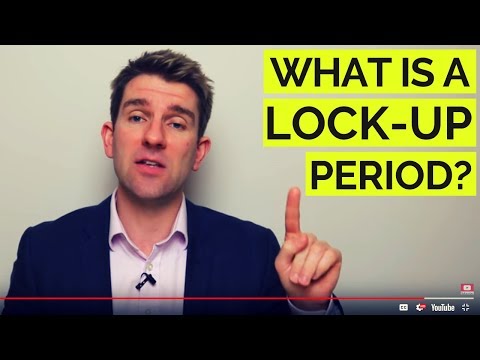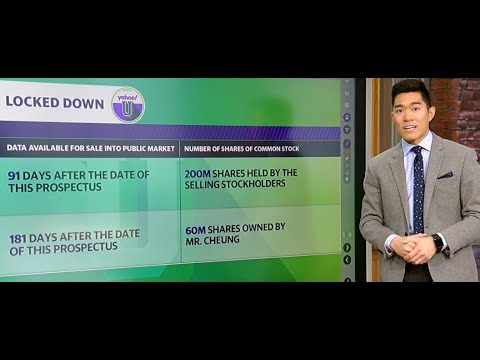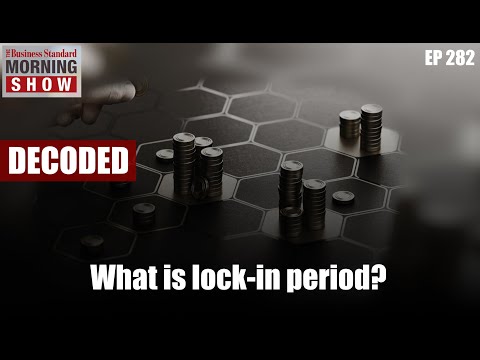Understanding the Lock-In Period’s Role in Home Loans
Navigating the choppy waters of home loans can be akin to steering a ship through uncharted territory. One such concept that often boggles the minds of homebuyers is the lock-in period. Let’s dive deep and unravel this term, shall we?

Decoding the Lock-In Period: A Primer for Homebuyers
So what exact role does a lock-in period play in the grand scheme of mortgages? Think of it as a promise from the lender to the borrower, where the lender guarantees certain loan terms, such as the interest rate, for a designated period. This timeframe commonly stretches over 30 or 90 days, but can vary based on the lender and the borrower’s unique situation.
Yet, it’s not just a casual pinky promise; this period has bona fide legal standing in home loan contracts, giving it the weight it deserves in the financial world. It’s no Sense8 moment of telepathic understanding—it’s written in clear black and white for all parties to agree upon (

| **Aspect** | **Details** |
|---|---|
| Definition | A lock-in period is the timeframe during which an investor cannot sell or withdraw their invested amount. |
| Common Applications | – Unit Linked Insurance Plans (ULIPs) – Mutual Funds – Mortgage Rates – Hedge Funds – Initial Public Offerings (IPOs) |
| Importance | Encourages long-term investing, induces fund stability while preserving liquidity, prevents early sell-off in markets, retains capital in start-ups |
| Typical Duration | – Mutual Funds: 3 years – Mortgage Rates: 30 to 90 days – Hedge Funds: Varies – IPOs: 90 to 180 days |
| Effects | – Stability in investment vehicles – Prevents premature withdrawal – Ensures commitment from insiders in case of start-ups |
| Completion Benefits | Freedom to redeem/withdraw investments partially or in full; may influence market prices post-expiration in IPO scenarios |
| Risk Factors | Potential for market price drops post-lock-up expiration, particularly for IPOs and high-interest-rate environments |
| Date (for Context) | August 16, 2023: Commentary on mutual funds’ stability; July 10, 2023: Warning about price drops after IPO lock-up periods |
The Financial Implications of a Lock-In Period
Imagine you’ve just found the perfect home. You’re thrilled, but the thought of interest rates doing the salsa sends shivers down your spine. Enter: the lock-in period. This little gem allows you to fix your rate, so even if the market rates flutter more than a butterfly convention, yours won’t budge.
But be wary, my friend; breaking up with your mortgage during this lock-in period can hit where it hurts—your wallet. Penalty fees are the lender’s way of saying, “We had a deal.” Yet, play your cards right, and analyze the market like a pro, and you could see some serious savings over the long haul.

Lock-In Period: A Tool for Risk Management in Lending
From the lender’s perspective, the lock-in period is as essential as a helm to a ship’s captain. It’s their way of managing risk and ensuring that they, too, can navigate the sometimes-stormy seas of the lending world. For borrowers, it balances the act of securing a fair rate with the flexibility of their loan options.

How the Lock-In Period Influences Your Mortgage Refinance Options
But what about the down the road, when the shimmer of a better rate catches your eye? The lock-in period plays hardball here, placing some constraints on when you can refinance. But fear not! Time it right—like a well-seasoned skipper—and the turn of the tide with the lock-in period expiration could lead to advantageous refinancing rates and terms.

The Lock-In Period’s Impact on Prepayment Strategies
It’s not uncommon to want to heave ho and drop some extra coin on your mortgage prepayment. Still, the lock-in period can hold some sway over your prepayment privileges. However, if you can calculate the break-even point with the meticulousness of an accountant, you may find scenarios where prepaying within the lock-in makes cents—and dollars, too.
The Lock-In Period and Home Loan Portability
Did you know? Your home loan can be as portable as a Usb fan in summer ( Yep, you can transfer your loan to another property under certain conditions, even during a lock-in. However, the financial implications of this maneuver during the lock-in phase can range from favorable to hefty, depending on a myriad of factors.
Lock-In Periods in Adjustable-Rate Mortgages (ARMs): A Special Consideration
ARMs and their love-hate relationship with lock-in periods are a whole different ballgame. The lock-in period can act as a buffer against the ups and downs of rate adjustments. It’s about strategic forecasting, like a weathered trader predicting market moves, and understanding how these caps can play out during the course of an ARM.
The Lock-In Period in the Larger Fiscal Landscape
Consider the fiscal landscape, where economic cycles like recession and inflation can influence your lock-in decisions. Factor in Federal Reserve policies and interest rate forecasts—after all, who doesn’t want to feel like a Wall Street wizard making shrewd, informed bets?
Borrower’s Strategies: Negotiating the Lock-In Period
Alright, so you’re not just going to sit there like a sitting duck, right? You’ve got to parley with that lender! Arm yourself with tips and understand your financial horizon like Captain Jack Sparrow understands the compass that points to what he wants most. Will it be a longer lock-in length, softer penalty clauses, or some other magical condition that aligns with your voyage?
The Lock-In Period’s Long-Term Impact on Your Real Estate Investment
Long-term thinking is key. The lock-in period’s influence on property value growth cannot be overstated. Think of it as the foundation of your financial future, tied to the soil your home sits upon.
Advanced Tools and Calculators for Lock-In Period Analysis
Now, don’t go about this with just a sextant and hope. Utilize the sextants of our age—advanced tools and calculators—to simulate the financial impact of different lock-in scenarios. You want to outsmart the market, not play catch-up.
Future Trends in Home Loan Lock-In Periods
Staring into the crystal ball, we see emerging patterns that will shape how lenders craft lock-in periods past the year 2024. Predictive analysis isn’t just for tech geeks—it can help inform how you select your lock-in period based on upcoming interest rate trends.
Lock-In Periods: Success Stories and Cautionary Tales
There’s no shortage of war stories in the world of lock-ins. We’re talking about case studies that either spell triumph or caution, providing valuable lessons to learn from past borrowers’ experiences—some riding into sunsets, others navigating storms.
Bridging Your Knowledge: Implementing an Effective Lock-In Period Strategy
Fear not! Implementing an effective lock-in period strategy doesn’t require an MBA—just some solid step-by-step guidance, chatting with financial advisors or a savvy Mortgage Broker ( and keeping an eye on personalized mortgage strategies.
Conclusion: Empowering Your Home Loan Journey with Lock-In Period Insight
And there you have it, matey! A grasp on lock-in periods is essential for anyone looking to navigate the treacherous yet rewarding world of home finance. So, leverage these insights like a finance guru, and chart a course for success on your home loan journey. The horizon is yours for the taking—as long as you’re wise about your lock-in periods.
Remember folks, it’s all about empowerment through knowledge, and at Mortgage Rater, we’re all about making sure your gears are well-oiled for this financial voyage. So stay educated, stay savvy, and may your mortgage seas be ever in your favor.
Understanding the Lock-In Period in Home Loans
Hey there, future homeowners! Let’s dive into something that’s as crucial as a steady foundation for your house—the lock-in period of your home loan. Now, don’t fret! We’re not about to hit you with a snooze-fest of financial jargon. Instead, we’ve got some fun trivia and tidbits to keep it as interesting as a page-turner.
What’s the Deal with Lock-In Periods Anyway?
So, you’re eyeing that dream home, and you’re on the verge of getting a home loan. But wait, here’s a twist—you’ve got to understand the “lock-in period”. Picture it like a commitment period between you and your lender; it’s the time frame where you and your loan are inseparable—like Jd Pardo in a thrilling drama, sticking around against all odds.
The lock-in period is your mortgages test of true love, where breaking up can cost you a pretty penny. In other words, paying off your loan or refinancing within this time could lead to penalties that bite harder than a cardboard sandwich.
The Price of Freedom
Imagine you’ve hit a jackpot and want to pay off your loan pronto. Well, not so fast—this is where the lock-in period swings in like a financial bouncer. Exiting early often means you’ve got to cough up what’s known as a ‘prepayment penalty’. And trust me, that can leave your wallet feeling emptier than a bachelor fridge.
But it’s not all bad news. Like building muscle with the dedication of Demi Bagby, sticking it out through the lock-in period can shape a better financial future. It gives you stability and predictability, like knowing the ground won’t give way beneath your feet—or your budget.
Margin for Error
Fun fact: Did you know the lock-in period can actually affect the “margin” of your loan? Yep, just like a tailor can adjust the fit of a suit, lenders can tweak your loan terms based on the lock-in period you choose. A longer tie-up might snag you a slimmer margin, making that monthly payment a tad more svelte. So yeah, the lock-in period doesn’t just lock down your rates—it can slim down your costs too!
Sharing the Knowledge Wealth
Just like it’s awesome to donate Books to share the joy of reading, sharing knowledge about lock-in periods helps you and your pals make smarter financial decisions. After all, finding the right lock-in period is like choosing the right book—it’s got to match your reading speed, or in this case, your financial goals.
Who knew lock-in periods could be so eye-opening? From keeping your rates as steady as a rock to shaping your financial contour—smart choices during this time can pave the way to a happy home and a hearty savings account.
Bet you didn’t think a topic like lock-in periods could be chock-full of fun facts and analogies, huh? Well, strap in because understanding the ins and outs of your mortgage can be as rewarding as nailing a perfect workout routine or finally finishing that book you’ve had on the shelf for ages. Choose wisely, and your lock-in period will be as golden as the keys to your new home! 🏡✨

What is a lock-in period?
Well, a lock-in period is like a promise ring between you and your lender — it’s a set time during which you’re guaranteed a specific interest rate on your mortgage, even if rates go up. Think of it as your personal interest rate safety net!
What is the benefit of lock-in period?
The benefit of a lock-in period is pretty sweet. It’s like a price freeze on your mortgage interest rate that gives you peace of mind – no worrying about rates shooting up while you finish your home-buying paperwork. You can just chill, knowing what your mortgage payments will look like.
What is lock-in period in banks?
In the banking world, a lock-in period is like a time-out for your money: it’s a stretch of time during which you cannot access funds in your bank account or end a financial product or service, like a mortgage or fixed deposit, without facing a penalty.
What is the minimum lock-in period?
Alrighty, when it comes to the minimum lock-in period, there’s no one-size-fits-all answer. It’s like asking, “how long’s a piece of string?” Different loans and investments have their own rules, but typically, we’re talking about a few months to several years, depending on where you put your cash.
What happens after lock-in period?
Oh boy, after the lock-in period? That’s when things get real. Your interest rate might rollercoaster up or down because the protective bubble is gone. It’s time to face the music of the market rates once your financial prom date with that locked-in rate is over.
What happens when lock-in period ends?
So when the lock-in period ends, it’s like the final bell at school – freedom! Your rate can now move with the market. This could mean better rates if they’ve dropped, but if they’ve climbed, you might need to buckle up for a higher payment.
What does 3 year lock in period mean?
A 3-year lock-in period is like a three-season TV show contract for your money — it’s not going anywhere for those 36 months. If it’s an investment, you can’t cash out; if it’s a loan, your interest rate won’t change for those three years, no matter what the market does.
What is the difference between lock in period and tenure?
Ah, lock-in period versus tenure – they’re siblings but not twins. Lock-in period is how long you’re stuck with something (like a rate or investment), and tenure is the total time you’ve committed to it – from start to finish. Think of it as the difference between a brief holiday and the entire span of your job.
Can we withdraw before lock in period?
Jump ship before the lock-in period ends? Not without hitting a wall of penalties or fees. It’s like signing up for a marathon and then trying to grab a taxi after the first mile — not exactly the plan.
Can you change your interest rate after you lock in?
Change your interest rate after you lock in? Nope, it’s like getting a tattoo – pretty much permanent until the lock period ends. You’ve got to wait it out or refinance if you want a change, and that’s a whole new ballgame.
Do all mutual funds have lock in period?
Do all mutual funds have a lock-in period? Nope, it’s not a given. They’re like restaurants; some require reservations, others don’t. Plenty of mutual funds out there let you buy and sell any day of the week.
Which investment instrument has the highest lock in period?
Which investment instrument has the longest timeout? That’d be Retirement accounts, like your typical 401(k). These guys play the long game, with lock-in periods running until you hit retirement age – talk about commitment!
What is 90 days lock-in period?
days locked in? You’re looking at about a 3-month timeframe where you can’t cash out or make changes. It’s like putting your savings on a short-term diet – no touching it for 90 days!
What is the 6 month lock-in period?
A 6-month lock-in period? It’s just double the fun – or wait – of the 90-day one. Set it and forget it, for half a year, your hands are tied when it comes to your cash or interest rates.
What does 3 year lock in period mean?
(Repeated)
What is the difference between lock in period and tenure?
(Repeated)
What is lock in period and lock-up period?
Lock-in period and lock-up period, they’re kinda like cousins. Lock-in is all about loans or investments and keeping rates or money in check. Lock-up, though, that’s usually about controlling when company insiders can sell their shares after going public – you know, to prevent a stock market free-for-all.
What is 90 days lock in period?
(Repeated)



